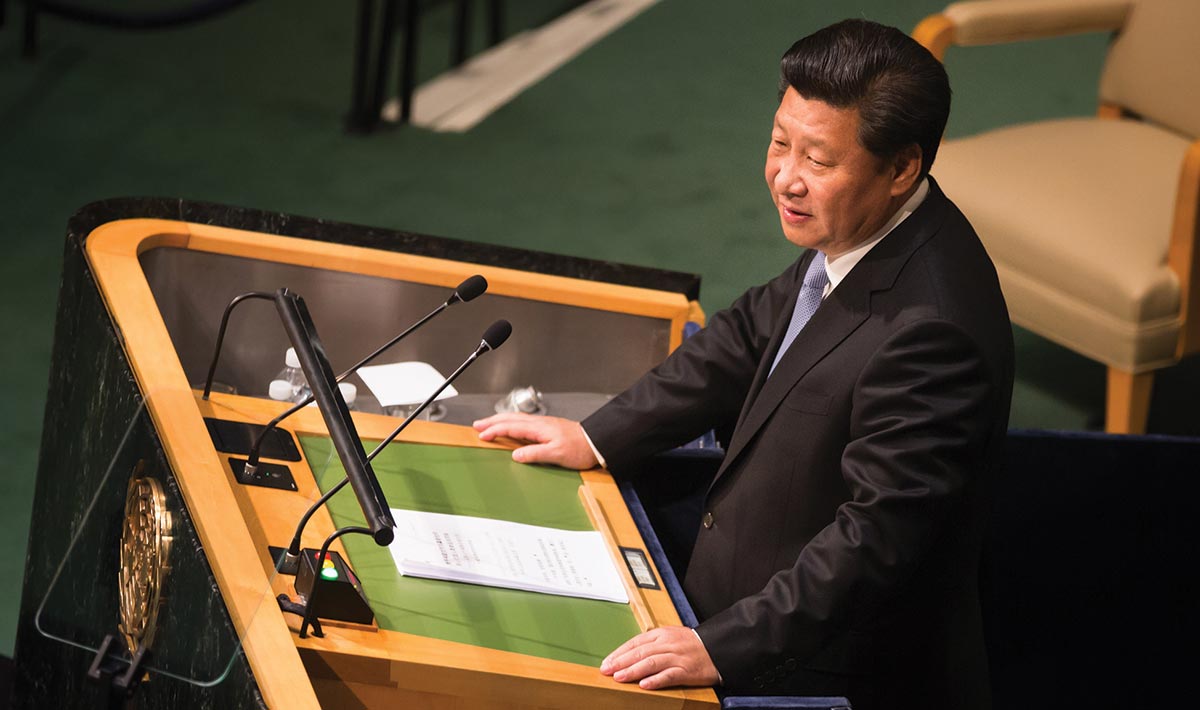G20 Executive Talk Series
September 2016
Infrastructure Development
Authored by: Jean-Sébastien Jacques
Infrastructure:
The Road to Global Prosperity
China’s One Belt, One Road policy is the latest innovation in its remarkably successful economic development program, with infrastructure development at its core.
Xi Jinping’s vision for taking China’s infrastructure expertise abroad has multifaceted benefits: China’s domestic infrastructure expertise will support job creation at home, build demand for Chinese-made goods and services, grow and strengthen economies that create new markets for Chinese trade and build partnerships with a broad and strategic geography.
This latest phase in China’s infrastructure-based growth plan builds on the country’s stunning success in creating domestic economic growth that has seen 700 million Chinese join the middle class over a generation. Then, as now, the cornerstone of this success was development of policies that created an infrastructure boom.
In a world struggling to restart global growth, other countries could learn from China’s success in infrastructure. G20 leaders have long recognized the catalytic power of infrastructure investment but have struggled to make commitments that have translated into a Chinese-style boom.
Infrastructure provides the foundation on which people build businesses, create jobs and generate wealth. It advances society, boosts trade and production and provides billions of people with the fundamentals of modern life that many of us take for granted, such as electricity and clean water, and linkages through transport and telecommunications.
Approximately $9 trillion is spent each year globally on infrastructure, including $2.6 trillion on transport, power and water, and telecommunications.
Despite this significant investment, there is expected to be a shortfall of up to $20 trillion in infrastructure spending over the next 15 years.
Policymakers should look closer at the potential productivity, economic and social dividends from a massive global infrastructure push. China’s economic pathway provides at least five lessons for the rest of the world:
SPENDING: China spends more on infrastructure than North America and Western Europe combined. Governments in the West need to understand that to enjoy the benefits of infrastructure-led growth they have to aim higher in terms of the size of investment spending. They can do that in smart ways through leveraging government funding and tapping private investors, but the bottom line is we need a step-change in the approach to spending.
FINANCING: China funded a large portion of its infrastructure growth by encouraging the financial sector to participate in infrastructure lending. Financial institutions in many of the G20 countries have very high prudential reserves that can only be invested in what are now very low-interest government securities. Banks and financial regulators should examine how they can create new forms of infrastructure-linked bonds that banks could hold as part of their prudential reserves, without creating undue risk to the financial system.
STREAMLINING PERMITTING: For major projects, China’s regulatory agencies worked together to advance projects of national importance through strong coordination to ensure projects were not unduly delayed by permitting and bureaucracy. In the US, President Obama recently signed into law a new program called FAST 41 that will ensure that all regulatory agencies involved in a major infrastructure project are coordinated, avoid duplication and abide by a reasonable timeline. Permitting is an area firmly in the control of government leaders and they can influence processes to ensure that permitting is smoother, without any safety or environmental impacts.

![]() Approximately $9 trillion is spent each year globally on infrastructure, including $2.6 trillion on transport, power and water, and telecommunications.
Approximately $9 trillion is spent each year globally on infrastructure, including $2.6 trillion on transport, power and water, and telecommunications.![]()
INNOVATION: China realized it wasn’t enough to just build roads and ports for today. The focus was always on the vehicles of tomorrow. Innovation is a hallmark of China’s infrastructure program. For instance, China is home to the first maglev train, a futuristic transportation innovation that whisks people at 431 km/h from Shanghai Pudong Airport to central Pudong. Besides the futuristic aspects of the Maglev train, the Chinese companies that built the track had to innovate to engineer unique solutions for the soil conditions in the Pudong area to meet stability and precision criteria. Several thousand concrete and steel piles were driven to depths up to 70 metres every 25 metres to secure the sustainability and safety of the track.
CLEAN POWER IS INFRASTRUCTURE TOO: Embedded in its infrastructure planning, China has made cleaning up the environment and conversion to clean power sources a national priority. The country is the world’s leading producer of renewable energy and China’s investment in clean power now exceeds its total investments in fossil fuels and nuclear power. For the tenth consecutive year, China added more new installed hydropower capacity than the rest of the world combined.
Building on the success of the last two decades of infrastructure investment and innovation, China is now sharing its infrastructure success with the rest of the world through the One Belt, One Road policy, the development of the multilaterally-funded Asian Infrastructure Investment Bank and the $40 billion Silk Road Fund. These developments are the next chapter in Chinese infrastructure leadership, one that will provide benefits for millions of people outside of China, not just China itself.
China’s infrastructure leadership was evident earlier this year in Shanghai where G20 Ministers and Governors reaffirmed their commitment to advance infrastructure investment, encourage co-operation between Multilateral Development Banks and launch a global infrastructure connectivity alliance to advance high-quality projects.
G20 leaders would be wise to take the time to learn from China’s many infrastructure successes and consider how they too can tap the multiple benefits to be derived from innovative infrastructure investment. Real, actionable commitments to spend more on infrastructure will spur global growth, facilitate trade and create jobs.

Jean-Sébastien Jacques was appointed Rio Tinto chief executive on 2 July 2016. He is also a director on the Rio Tinto board.
He joined Rio Tinto in October 2011 as the president, International Operations for the Copper group. He was appointed to Rio Tinto’s Executive Committee in February 2013 when he was made chief executive
of the Copper group. In February 2015 he also assumed responsibility for the company’s coal assets, leading a business with nine international operations. He also had responsibility for two growth projects, Oyu Tolgoi in Mongolia and Resolution in the USA.
He has been chairman of the International Copper Association since late 2014.
Prior to joining Rio Tinto, he spent more than 15 years working in various roles across Europe, South East Asia, India and the US. He covered a wide range of operational and functional positions for the aluminium, bauxite and steel industries and served as group director, Strategy for Tata Steel Group from 2007 to 2011.
Jean-Sébastien lives in London with his family and holds a Master of Science from École Centrale Paris.